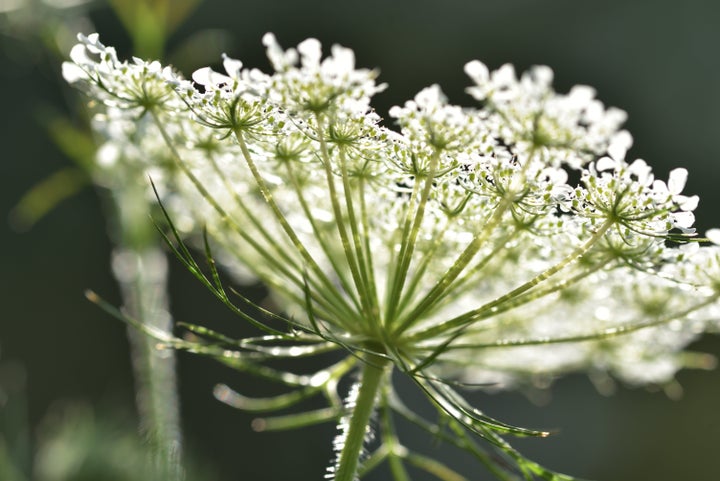
Yes, yes – I’m sure that, technically, summer is a beautiful thing.
But with a heatwave in full swing, a seemingly never-ending onslaught of those teeny-tiny flies, and a flourishing weed population, sometimes it can be pretty hard to remember the joys of the season.
And it seems the bad news continues: not only are some of the pesky plants deeply annoying, but one in particular has been branded the “UK’s most dangerous plant”.
Giant hogweed, a non-native species to the UK, is usually spotted beside river banks – and it blooms in June and July.
Its toxic sap “can cause life-changing burns and blisters for those that come into contact with it” – in fact, recently a man named Martyn Ferguson reported skin burns to The Mirror.
So, how can you spot the vile vegetation – and what should you do if you notice some?
Giant hogweed is, well, gigantic
The Royal Horticultural Society (RHS) says the massive plant can grow up to 3.5m tall, with a span of up to 2m (one flower head alone can be 60cm across).
A close relative to cow parsley, its thick bristly stems are often purple-blotched.
And it has the signature, cow parsley-style clusters of flowers at the top too: “The flowers are white and held in umbels, (flat-topped clusters, like those of carrots or cow parsley), with all the flowers in the umbel facing upwards.”
Introduced as an ornamental plant in the 19th century, giant hogweed looks very similar to our own native, regular-sized version. While both have toxic sap, burns from the larger variety tend to be much worse than that from the smaller kind.
How can it hurt me?
You should be OK if you come into contact with the outside of the plant. But if you accidentally come into contact with its dangerous sap? Well, that’s another story.
“Chemicals in the sap can cause severe skin irritation and photosensitivity,” says the Sheffield and Rotherham Wildlife Trust (SRWF).
It can take hours for the boils, rashes and redness to develop, so you might not know you’ve been exposed until it’s too late.
On top of that, sun exposure makes the effects worse. So you can see how people who are outside already, and who don’t know they’ve got the plant’s sap on their skin for hours, can stay out in the sun until the toxic chemicals cause permanent burns.
What should I do if I come into contact with the plant?
“If you think you have been in contact with giant hogweed then it is important to wash the affected skin thoroughly and as soon as possible with soapy water,” says the SWRF.
And contact a medical professional if you continue to feel unwell.
If you need to get rid of hogweed from your garden, you should wear full protective clothing – or ask a specialist to come and remove it for you.
And while it might be tempting to simply mow down your floral enemy, you’re advised to put away the strimmer – this can disperse its seeds further.
The RHS recommends manually pulling up the plants by their roots (wearing gloves of course), digging them out, or suppressing them with mulch. If all else fails, consider a weedkiller like glyphosate or triclopyr.
Liek Japanese knotweed, giant hogweed is considered controlled waste. That means you’ll have to dispose of it at a licensed landfill – sorry, but why does this plant insist on being difficult, even beyond the grave?